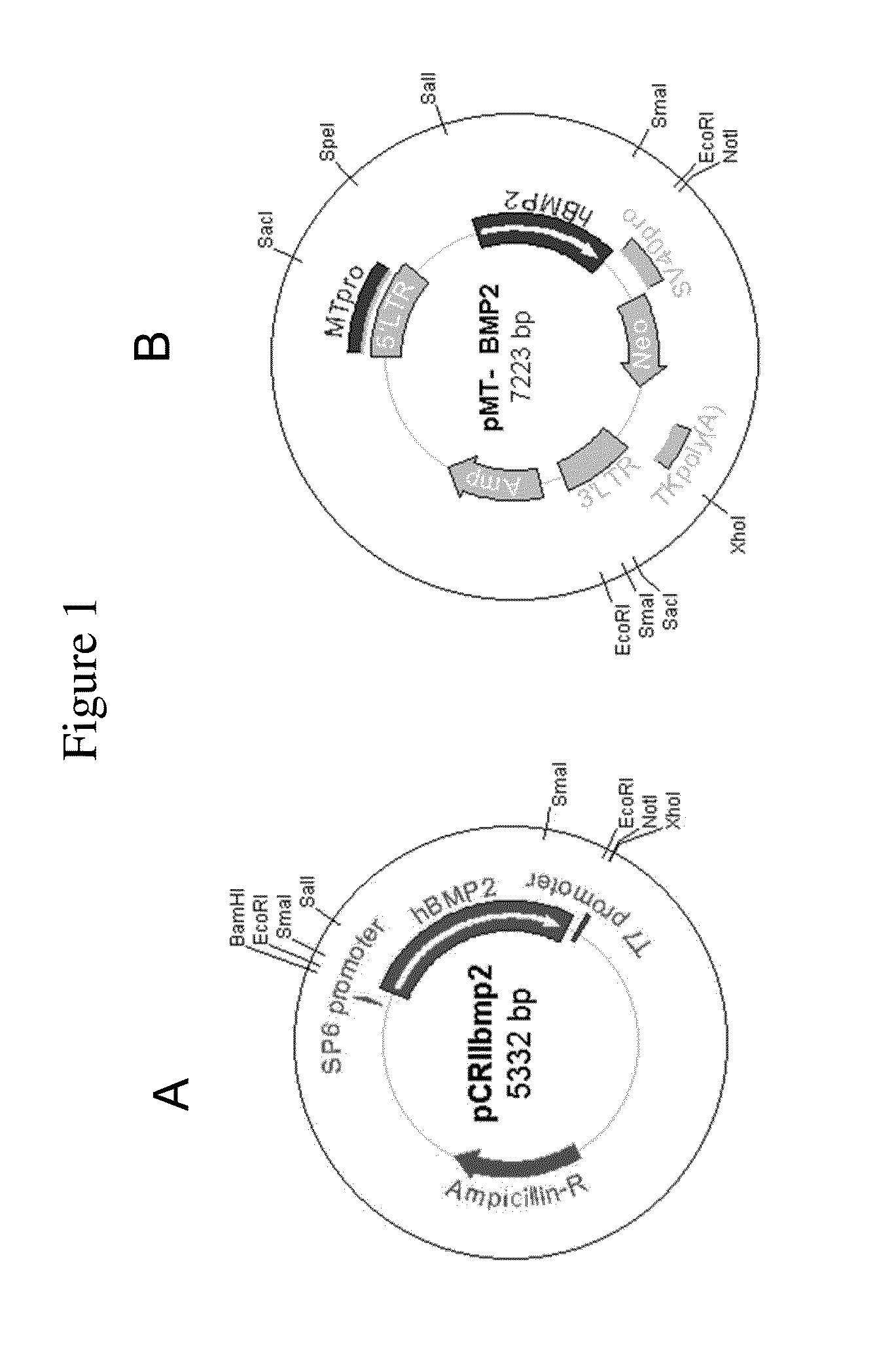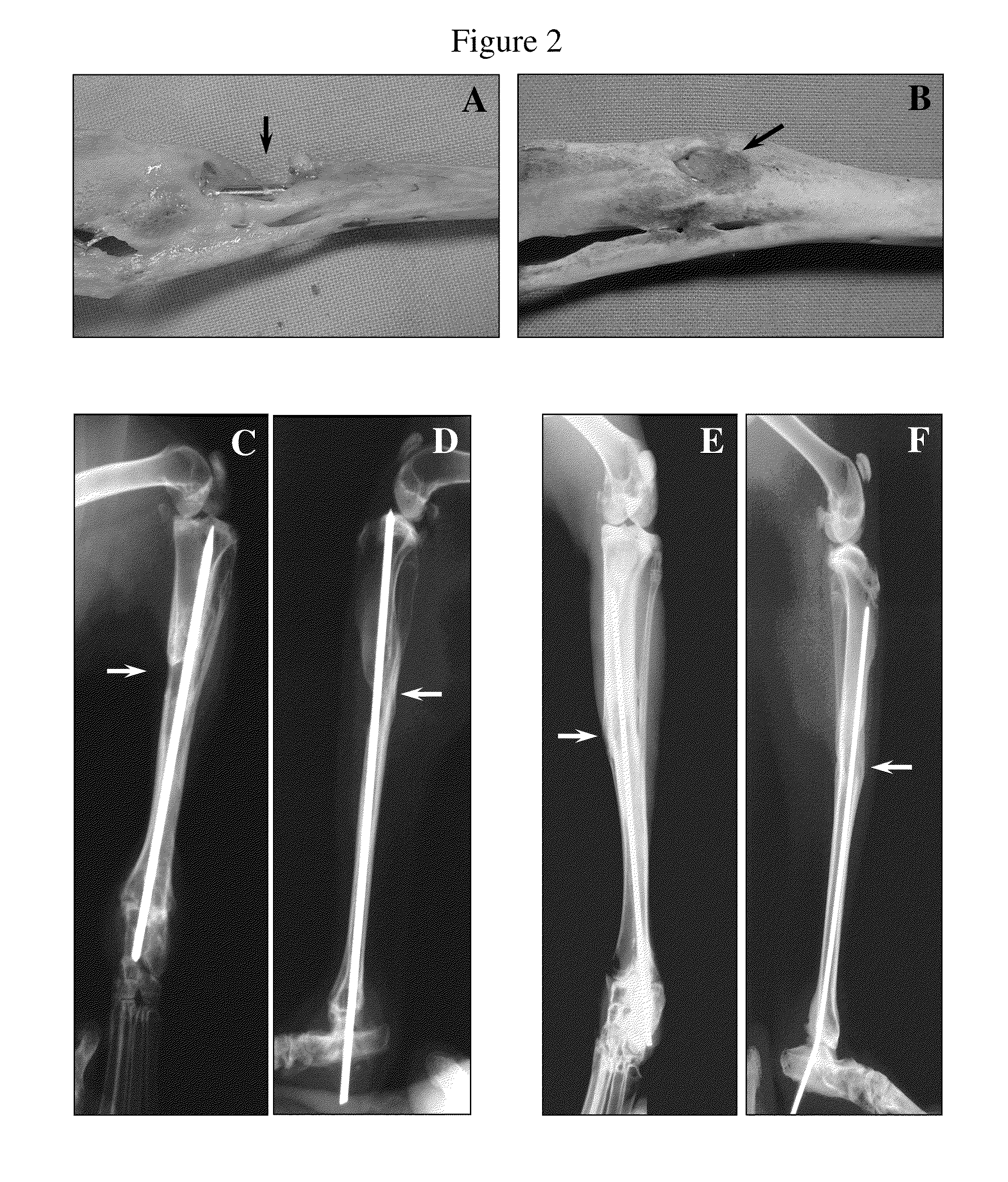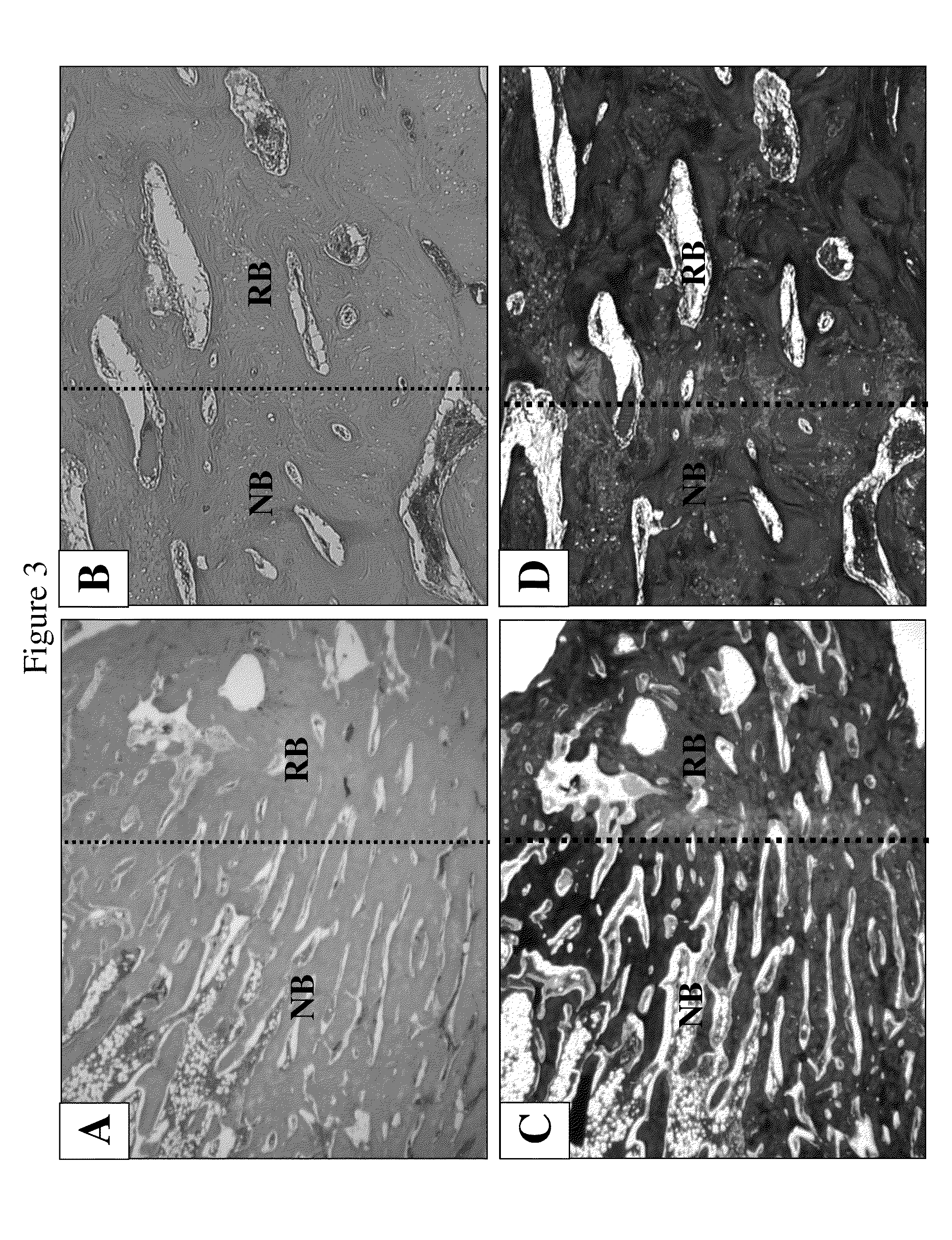Method for healing bone fracture using transfected chondrocytes
a bone fracture and chondrocyte technology, applied in the field of bone fracture healing using transfected chondrocytes, can solve the problems of fracture healing complex process, limited wide clinical application, and short-term effects of high cos
- Summary
- Abstract
- Description
- Claims
- Application Information
AI Technical Summary
Benefits of technology
Problems solved by technology
Method used
Image
Examples
example 1
Experimental Procedure for Bone Regeneration
[0158]Human BMP2 gene was cloned by PCR (polymerase chain reaction) with human fetal brain cDNA and two primers. 5′ primer was 5′-TCCCAGCGTGAAAAGAGAGACTGC-3′ (SEQ ID NO:1) and 3′ primer was 5′-TTTTGCTGTACTAGCGACACCCACAACC-3′ (SEQ ID NO:2). After the PCR with GC-rich PCR system (Roche), cloning into pCRII-TOPO vector was done using TOPO TA cloning kit (Invitrogen) (FIG. 1A). For cloning into retroviral vector, pCRIIbmp2 DNA was cut with Sal I and Not I. Human BMP2 cDNA insert (˜1.2 kb) was ligated into pMTMLV with Sal I and Not I overhangs (FIG. 1B).
[0159]Packaging cell line GP-293 cell (5×105 cells / p60 culture dish) was cultured one day before transfection. pMTMLV or pMT-BMP2 was transfected to GP-293 cell using Fugene (Roche). 48 hours after the transfection, neomycin was added to the culture media for the selection of neomycin resistant cells. Selection was continued for 10 days. Selected 293MT and 293MTBMP2 cells were cultured (5×105 ce...
example 2
Injection of NIH3T3-BMP-2 Cells into Rabbit
[0160]New Zealand white rabbits weighing 2.0-2.5 kg were selected for animal study. The tibia bone was exposed and a defect (2 cm long and 0.5 cm deep) was made with orthopedic surgical instruments. Either control NIH3T3-neo, or NIH3T3-BMP-2 cells (2 ml of 2×106 cells / ml) were injected into the defect area after suturing. At 8 weeks after injection of the cells, radiographic analysis and histological examination were performed.
example 3
Weekly Radiographic Examination
[0161]New Zealand white rabbits weighing 2.0-2.5 kg were selected for animal study. The tibia bone was exposed and a defect (2 cm long and 0.5 cm deep) was made with orthopedic surgical instruments. NIH3T3-BMP-2 cells (2 ml of 2×106 cells / ml) were injected into the defect area in the tibia bone after suturing. Then radiographic analysis was performed at 1, 2, 3, 4, 5, 6, and 7 weeks after injection of the cells. The specimen was harvested at 7 weeks post injection and a picture was taken. Histological examination was carried out after harvest.
[0162]FIGS. 2A-2F show regeneration of bone with NIH3T3-BMP-2 fibroblast cells. FIGS. 1A and 1B show pictures of leg bones after 8 weeks of injection of control NIH3T3 fibroblast cells (A) and NIH3T3-BMP-2 cells (B). FIGS. 2C-2F show radiographic examinations of the control (C & D) and experimental (E & F) leg bones before sacrificing the animals. The bone defect treated with cells expressing BMP-2 proteins was he...
PUM
| Property | Measurement | Unit |
|---|---|---|
| time | aaaaa | aaaaa |
| concentration | aaaaa | aaaaa |
| size | aaaaa | aaaaa |
Abstract
Description
Claims
Application Information
 Login to View More
Login to View More - R&D
- Intellectual Property
- Life Sciences
- Materials
- Tech Scout
- Unparalleled Data Quality
- Higher Quality Content
- 60% Fewer Hallucinations
Browse by: Latest US Patents, China's latest patents, Technical Efficacy Thesaurus, Application Domain, Technology Topic, Popular Technical Reports.
© 2025 PatSnap. All rights reserved.Legal|Privacy policy|Modern Slavery Act Transparency Statement|Sitemap|About US| Contact US: help@patsnap.com



